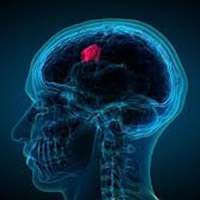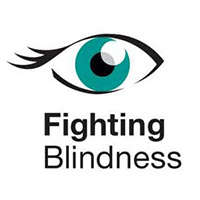The eyes may be the "windows to the soul" but they also offer an insight into your general health. In fact, the inside of the eye can reveal signs of any vascular disease from diabetes to high blood pressure. Optometrists and ophthalmologists are able to detect many serious conditions while they are still in the early stages. Sadly research by the Eyecare Trust reveals that less than 40% of people do not have our eyes checked every two years, as recommended, and 1 out of 10 people has never had an eye examination.
Here are a few of the conditions an eye examination can detect:
(1) Diabetes is estimated to affect 750,000 people in the UK but don't know it, according to Diabetes UK. If untreated, the life-threatening condition can lead to impaired vision or even blindness. A comprehensive eye exam can detect the first signs. That's because over time, a high blood-glucose level can weaken and damage the tiny blood vessels on the surface of the retina. Dot haemorrhages or tiny leaks from damaged blood vessels are one of the indications of diabetes. Patients may then reveal they are experiencing other symptoms like going to the loo a lot and thirst are tell-tale signs of early diabetes.
Annual eye exams are recommended for any individual who has diabetes or is over 40 with a family history of glaucoma. And six-monthly checks are advised for under-16s. But, if you feel your vision is changing or your eyes feel uncomfortable, don't wait until your appointment is due. See your optometrist immediately.
(2) High blood pressure is also detectable. Squiggly blood vessels on the retinal surface can be detected which is often as a result of elevated blood pressure. These changes are triggered by the force of the blood passing through which can lead to haemorrhaging behind the eye. “It's quite common to spot high blood pressure signs in the eyes of younger people who haven't started having regular checks for the condition.
(3) Cardiovascular disease as a result of high cholesterol can cause blockages in any of the body's blood vessels - including those in the eyes. During the eye examination, an optometrist can spot little lumps of cholesterol running through the blood vessels. Eventually they can cause blockages and lead to 'blind spots' in vision but until that point there is no pain, and no symptoms.
(4) Cataracts are like the lens in a camera. If the lens inside the camera become cloudy, it is not possible to clear it without dismantling the camera and replacing the cloudy lens. Likewise, the lens in the eye needs to be clear to work properly. With age and some conditions, it can gradually become "cloudy" - causing blurred vision. An optometrist can spot the early signs of a cataract before blurring occurs. Simply making one’s spectacle lenses stronger is not an option in these cases. Surgical intervention is necessary to remove the cloudy lens and replace it with a new clear lens.
(5) Glaucoma is a condition that is caused by high pressure inside the eye. This causes irreversible damage to the retinal nerve fibres, ultimately leading to vision loss and if not treated, it can lead to blindness. The main risk is ageing, but you're at a higher risk if you have the condition in the family, are Afro-Caribbean, very short-sighted or have had a previous eye injury. The danger with glaucoma is that your eye may seem normal," explains Iain Anderson. "In most cases there's no pain and you may not notice changes in your eyesight. However, your vision is slowly being damaged." Early diagnosis and regular monitoring by your eyecare practitioner, and treatment to reduce eye pressure can minimise further sight loss.
(6) Macular degeneration is usually Age Related. The macula is the tiny small but vital area in the centre of the retina responsible for detailed central vision, but with age the cells can become damaged. There are two types of macular degeneration - "wet" and "dry". This is not a description of what the eye feels like but what the eye care practitioner sees when examining the inside of the eye. The dry condition develops very slowly over a period of years, causing a gradual loss of central vision, whereas the Wet type causes a rapid loss of central vision. Both forms are painless and usually affect one eye more than the other. This makes it difficult to notice because the patient's "good" eye compensates for loss of sight in the affected eye.

(7) Cancerous growths can occur inside the eye as in any part of the body, but thankfully cases are very rare. By examining the inside of the eye, in some cases the optometrist is able to see a suspicious looking growth and make an urgent referral to an eye specialist for further investigation and treatment. Early detection is vital if treatment is to be successful. If you have any changes in vision, make an immediate appointment to see your optometrist.
(8) Brain tumours are very rare, but some tumours are possible to detect during an eye examination. A brain tumour can trigger a rise in intracranial pressure which causes the optic disc to swell. This can sometimes be seen when looking into the eye. It often occurs in the earliest stages before symptoms such as headaches or nausea.
It is good practice to make time for an eye exam. Broken bones heal, but if you lose your sight in one or both eyes, that's it. Look after them - they're precious.





